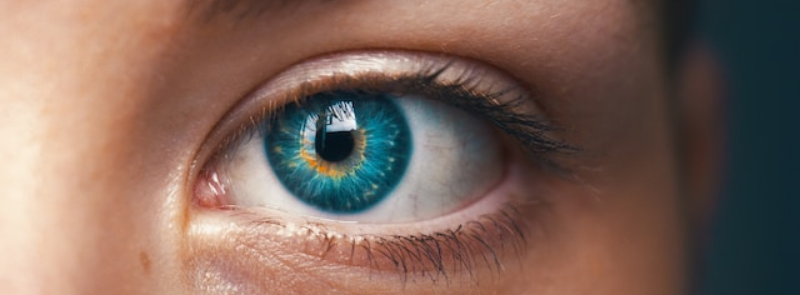
When It Occurs
Every March 12th
Official Website
Timeline
Days Passed (1023)
# Hashtags
#WorldGlaucomaDay #CombatBlindness
March 12th is observed as World Glaucoma Day, signaling the commencement of World Glaucoma Week, a joint initiative by the World Glaucoma Association and the World Glaucoma Patient Association. The overarching goal of this project is to combat blindness resulting from glaucoma by fostering awareness and emphasizing the importance of routine eye examinations that include a thorough assessment of the optic nerve.
History: World Glaucoma Day was initiated by the World Glaucoma Association (WGA) and the World Glaucoma Patient Association (WGPA). The day was first celebrated in 2008 and has since expanded to World Glaucoma Week, which usually takes place around March 12th, to maximize awareness and outreach efforts.
Objectives:
- Raise Awareness: Educate the public about the risk factors, symptoms, and consequences of glaucoma.
- Promote Early Detection: Encourage regular eye examinations to detect glaucoma early.
- Support Patients: Provide information and support to individuals diagnosed with glaucoma.
- Advocate for Research: Promote research efforts to better understand glaucoma and develop more effective treatments.
Significance:
- Prevent Blindness: Glaucoma is a leading cause of irreversible blindness. Early detection and treatment can prevent significant vision loss.
- Public Health: Raising awareness helps reduce the global burden of glaucoma and associated healthcare costs.
- Quality of Life: Proper management of glaucoma can significantly improve the quality of life for those affected by the condition.
What is Glaucoma? Glaucoma is a group of eye diseases that damage the optic nerve, which is crucial for vision. This damage is often caused by abnormally high pressure in the eye. There are several types of glaucoma, but the most common ones include:
- Primary Open-Angle Glaucoma: The most common type, where the drainage canals in the eyes become clogged over time.
- Angle-Closure Glaucoma: A less common type that can occur suddenly and is a medical emergency.
- Normal-Tension Glaucoma: Where optic nerve damage occurs even with normal eye pressure.
- Secondary Glaucoma: Resulting from another medical condition or injury.
Risk Factors:
- Age: People over the age of 60 are at higher risk.
- Family History: A family history of glaucoma increases risk.
- Ethnicity: African Americans, Hispanics, and Asians have higher risks for certain types of glaucoma.
- Medical Conditions: Conditions such as diabetes, high blood pressure, and heart disease can increase risk.
- Eye Injuries: Past eye injuries can lead to glaucoma.
- Prolonged Corticosteroid Use: Long-term use of corticosteroids can increase eye pressure and risk of glaucoma.
Symptoms:
- Early Stages: Often, there are no symptoms in the early stages. This is why glaucoma is called the "silent thief of sight."
- Progressive Symptoms: Gradual loss of peripheral vision, tunnel vision in advanced stages.
- Acute Angle-Closure Glaucoma Symptoms: Severe eye pain, nausea, vomiting, sudden onset of visual disturbance, blurred vision, and halos around lights.
Diagnosis and Treatment:
- Eye Exams: Comprehensive eye exams, including tests for eye pressure, optic nerve damage, and peripheral vision, are crucial for early detection.
- Medications: Prescription eye drops or oral medications to lower eye pressure.
- Laser Treatment: Procedures to improve fluid drainage from the eye.
- Surgery: Various surgical options to create new drainage pathways or reduce fluid production in the eye.
How to Participate:
- Get an Eye Exam: Schedule a comprehensive eye exam, especially if you are at risk.
- Spread Awareness: Use social media and community events to share information about glaucoma.
- Support Organizations: Contribute to or volunteer with organizations focused on glaucoma research and patient support.
- Educate Yourself and Others: Learn more about glaucoma and share knowledge with friends and family.
Organizations Involved:
- World Glaucoma Association (WGA): Focuses on promoting global awareness and collaboration among glaucoma professionals.
- World Glaucoma Patient Association (WGPA): Provides support and information for glaucoma patients worldwide.
- Glaucoma Research Foundation: Dedicated to finding a cure for glaucoma through research and education.
- National Eye Institute (NEI): Part of the U.S. National Institutes of Health, supporting research and education on eye health.
Conclusion: World Glaucoma Day is a crucial observance for raising awareness about a leading cause of blindness. By promoting early detection, providing patient support, and advocating for research, the day helps to mitigate the impact of glaucoma on individuals and communities worldwide. Engaging in activities and supporting efforts to fight glaucoma can contribute significantly to preventing vision loss and improving eye health globally.


